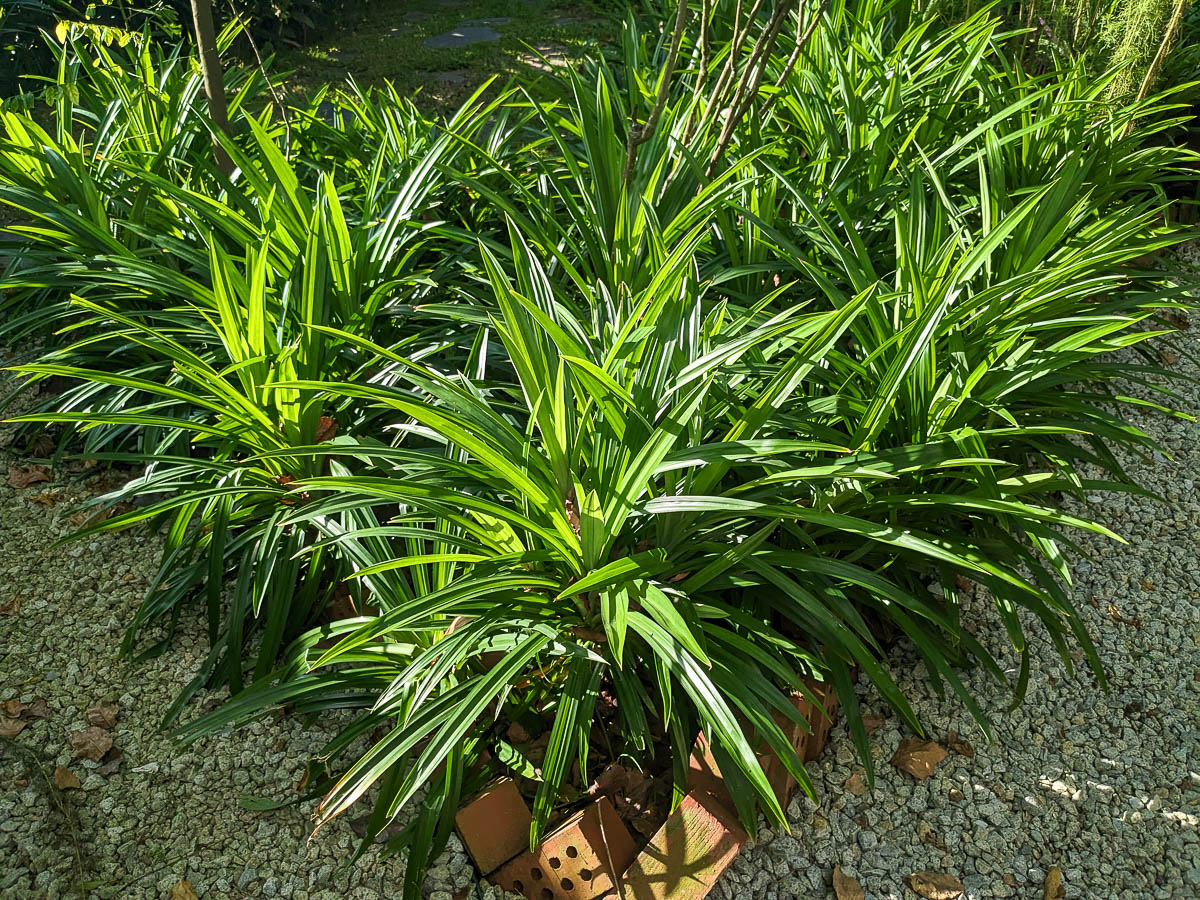Pandan
Pandan (Pandanus amaryllifolius)
Other common names: Fragrant Pandan, Scented Pandan, Screwpine, Fragrant Screwpine, Indonesian Screwpine, Pandan Rampeh, Pandan Wangi, Daun Pandan, 班兰

Pandan is a common herb grown in a wide variety of gardens across Singapore. Its fragrant leaves produce a juice that is used to flavour desserts, tea, meat dishes, and rice. The leaf itself cannot be eaten because it is too fibrous and is typically discarded after cooking.
Pandan is a perennial crop that readily grows in most gardens with semi-shade and thrives in waterlogged areas. It has a relatively shallow root and can be grown in pots, but it is usually grown in true ground where it spreads rapidly.
Sun and soil needs:
Pandan does well in less than 4 hours of direct sunlight or 6-8 hours of indirect sunlight. Plants do best in pots with loamy soil at least 10cm deep, or in true ground. Pandan will also readily grow in clayey soil, along large waterbodies, and in heavily waterlogged areas.
Pandan can withstand periods of drought, but the lack of water will stunt its growth.
Growing:
Pandan grows rapidly, particularly during the wet season. If planted in true ground near other plants, Pandan can smother its neighbours if it is not hard pruned regularly.
Harvesting:
Plants can be harvested for leaves at any time. Older Leaves should be harvested from the bottom of the plant, as per cut-and-come-again harvesting, with new leaves left intact to ensure more growth.
_jacquelinechua.jpg)
Whole heads of pandan can also be harvested, but the offshoots that develop will take a while to grow large enough to replace the harvested portion.
Take note that the older leaves have sharp edges and may cause skin irritation and cuts. Use arm sleeves and gloves when maintaining this plant for safety.
Propagation:
_jacquelinechua.jpg)
Pandan is typically propagated by division. Offshoots can be readily taken for propagation once they have roots and can be cut at the base or twisted off the main plant.
Common problems & solutions:
Like most strong-smelling herbs, this plant is relatively resistant to pests and disease if kept healthy.
Aphids, Mealy Bugs, Whiteflies, and Spider Mites often infest the plant if it has underlying problems like being root-bound. Mechanical pest control methods like pruning the infested parts are the best methods for managing these pests in the short term, but resolving the underlying problem will prevent them in the long term.
This plant can grow long and leggy, especially if it has been harvested from for a long time. Prop the top up with stakes or remove the leggy stem to allow offshoots to replace it.

